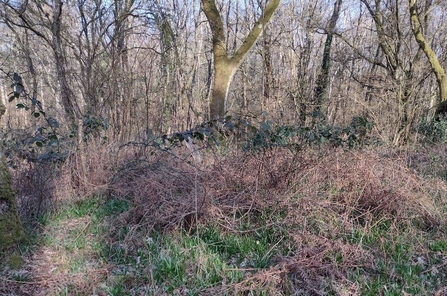March, if you get a calm sunny day, is a lovely time to be in a broadleaved wood. They are just beginning to wake up, with celandines, primroses, the first dog-violets and wood anemones, all reminding us that colour is coming again. It is also the month that we begin our deer impact surveys.
Rich and regenerating woods are a home to host of specialist species from bluebells, marsh tits and dormice, down to fungi and deadwood invertebrates. But woodland habitats are facing a range of long-term pressures including climate change, fragmentation and especially in recent years, ash dieback disease.
Yet another significant factor for woodland health is the increase in deer populations. At the start of the 20th century, wild deer were basically absent from our three counties; but during the last century, and particularly in the last 50 years, deer numbers have boomed, and they are now a common sight in fields and woods.
In Berkshire, Buckinghamshire and Oxfordshire, we have three species of deer to consider in relation to woods – the native roe deer and the introduced fallow and (Reeve’s) muntjac. All three are species that live in woods, but each has a different impact.



